Exporting a geometry suitable for DRTF generation from AutoCAD
AutoCAD is one of many CAD modelling tools that are used in the industry to generate geometry assemblies made of different parts. Other tools include Rhinoceros, Parasolid, Solidworks, Autodesk Fusion, CATIA, and many more. This guide demonstrates how to use AutoCAD to export a CAD file into a DXF file that can be imported as a device geometry in the SDK.
Although it is possible to create a Mesh primitive with the shape of a cylinder, we show how to mesh a 3DSOLID created from a curve and an extrusion.
Create a simple shape like a cylinder in AutoCAD.
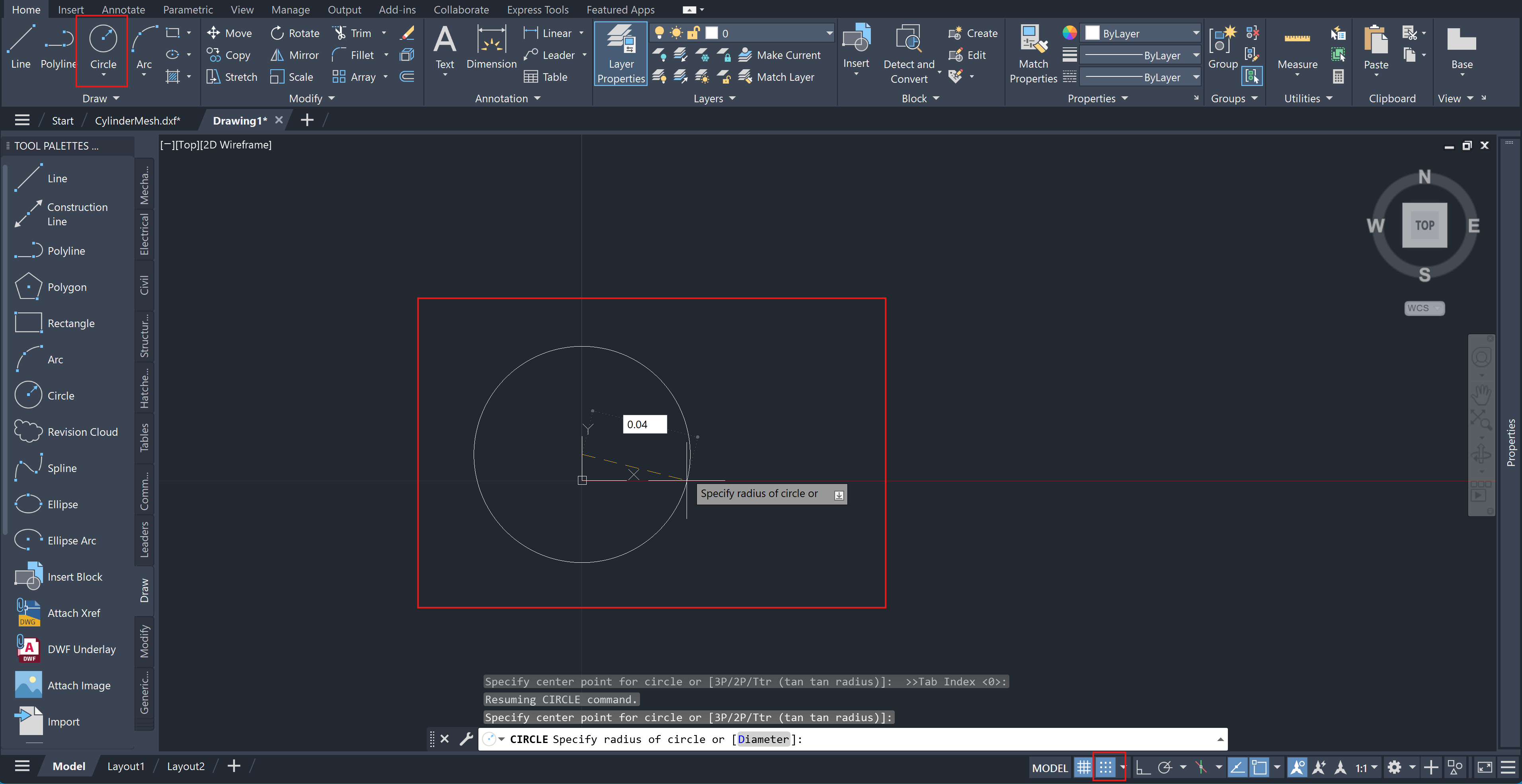
From the Home tab on the top left, we select Circle.
We pick or type the origin point 0,0,0.
We then set a radius for our circle by typing it or picking a point, for example 0.04. Our unit is meters.
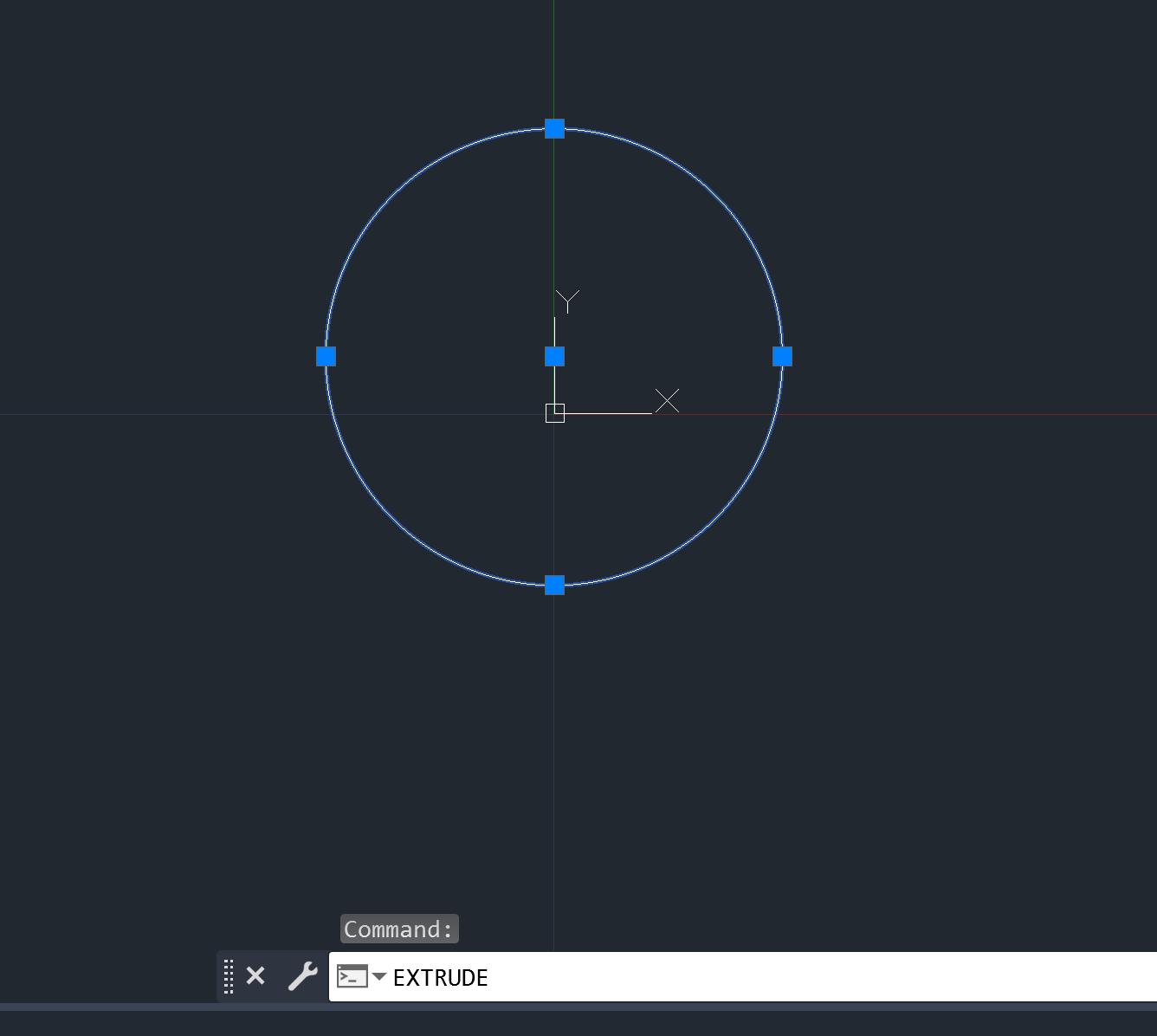
Next, we select the Circle and type the command EXTRUDE.
We specify the height along the z direction, for example 8 cm as 0.08 meters.

If we change the view angle using the navigator, and we switch the visibility to Hidden, we can see our cylinder showing as a 3D Solid, with a series of handles that allow its modification. The geometry is accounted as 3D Solid in the property inspector on the right.
Converting the solid to surfaces
We first need to convert the solid to surfaces using the command
CONVTOSURFACE.
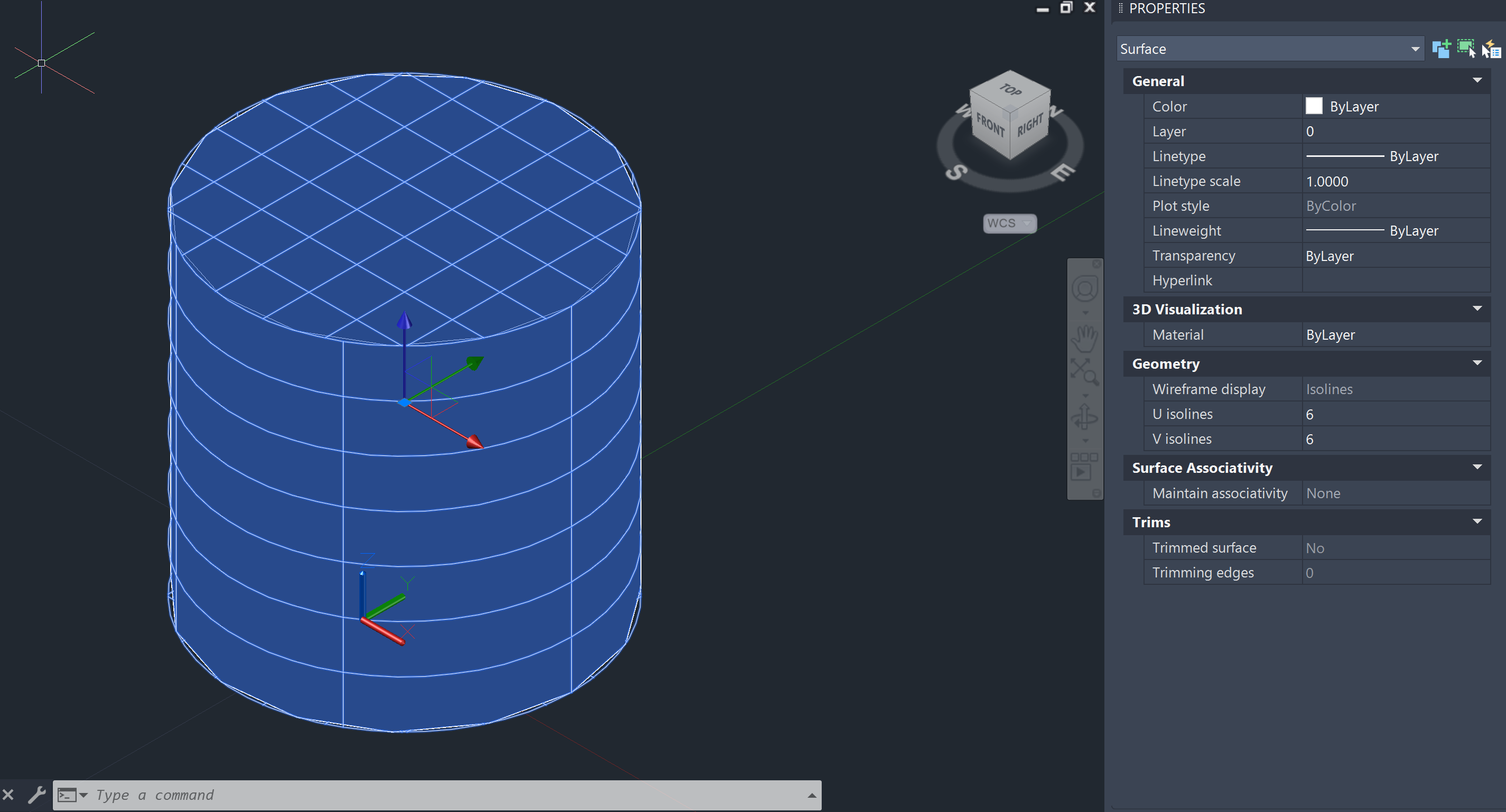
Converting the surfaces to mesh
We use MESHOPTIONS to transform the Surface into a Mesh.
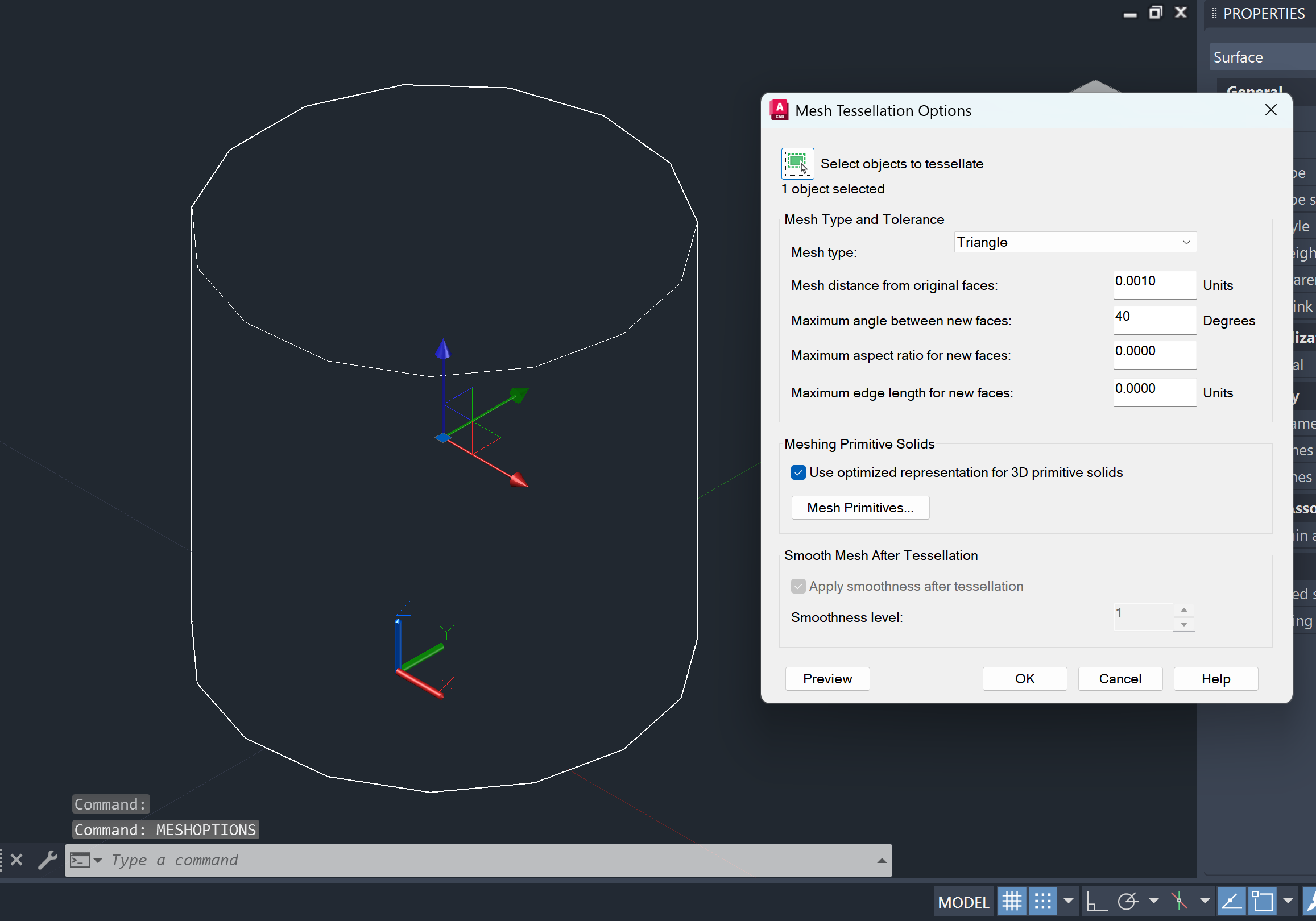
In this window it is possible to decide the resolution of your mesh. By clicking Meshing Primitive Solids it is possible to optimize the meshing for primitives like a cylinder, like in our case. We recommend selecting the Mesh type "Triangle", as shown in the picture below.
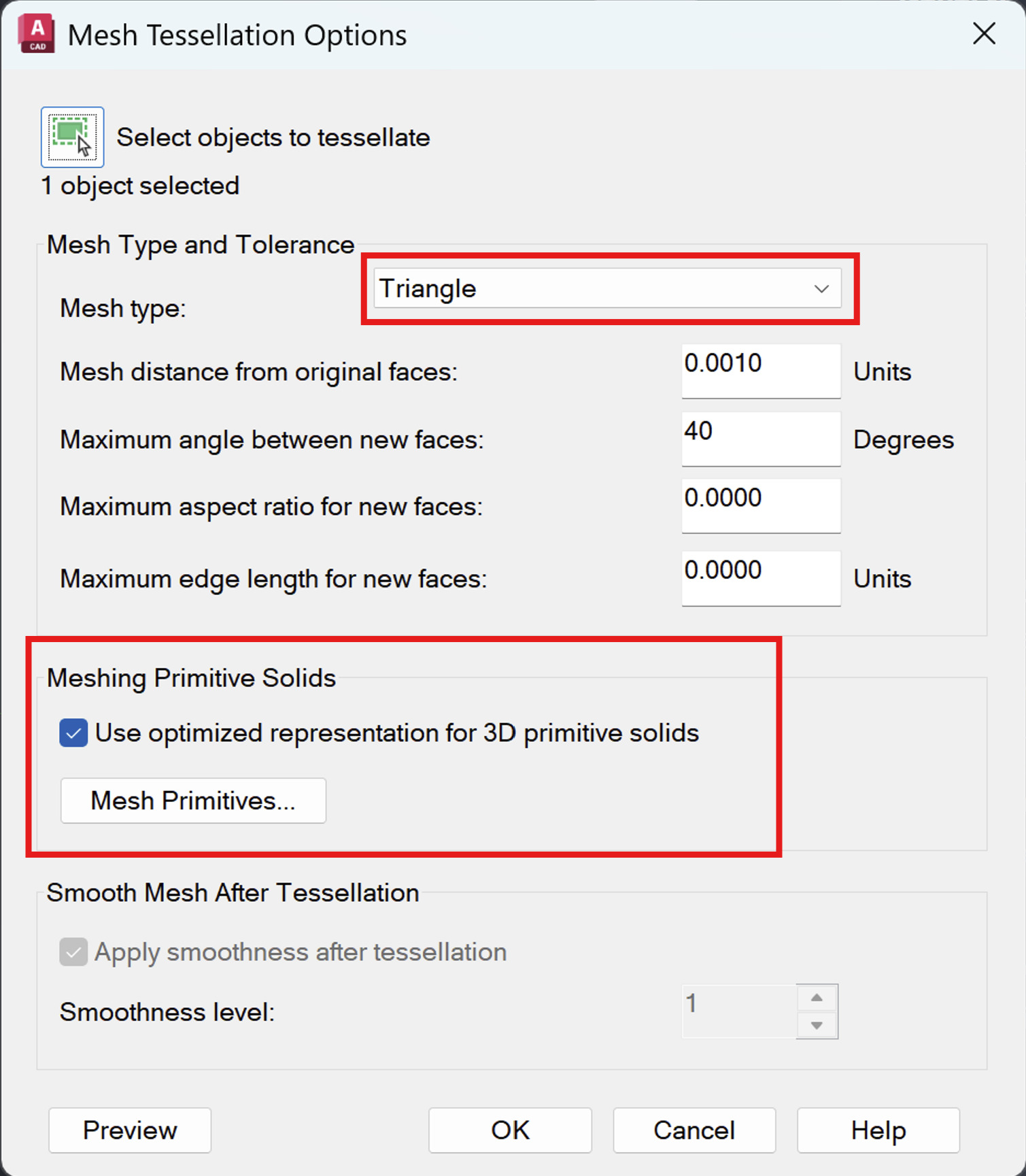
It is also possible to edit the maximum edge length when generating new faces. This will attemp to create elements with boundaries smaller than the limit set. In the picture below we see how setting a limit of 5 mm creates very small faces. In this case it is necessary to deselect the Meshing Primitive Solids checkbox and the box that applied the smoothing in the lower panel.
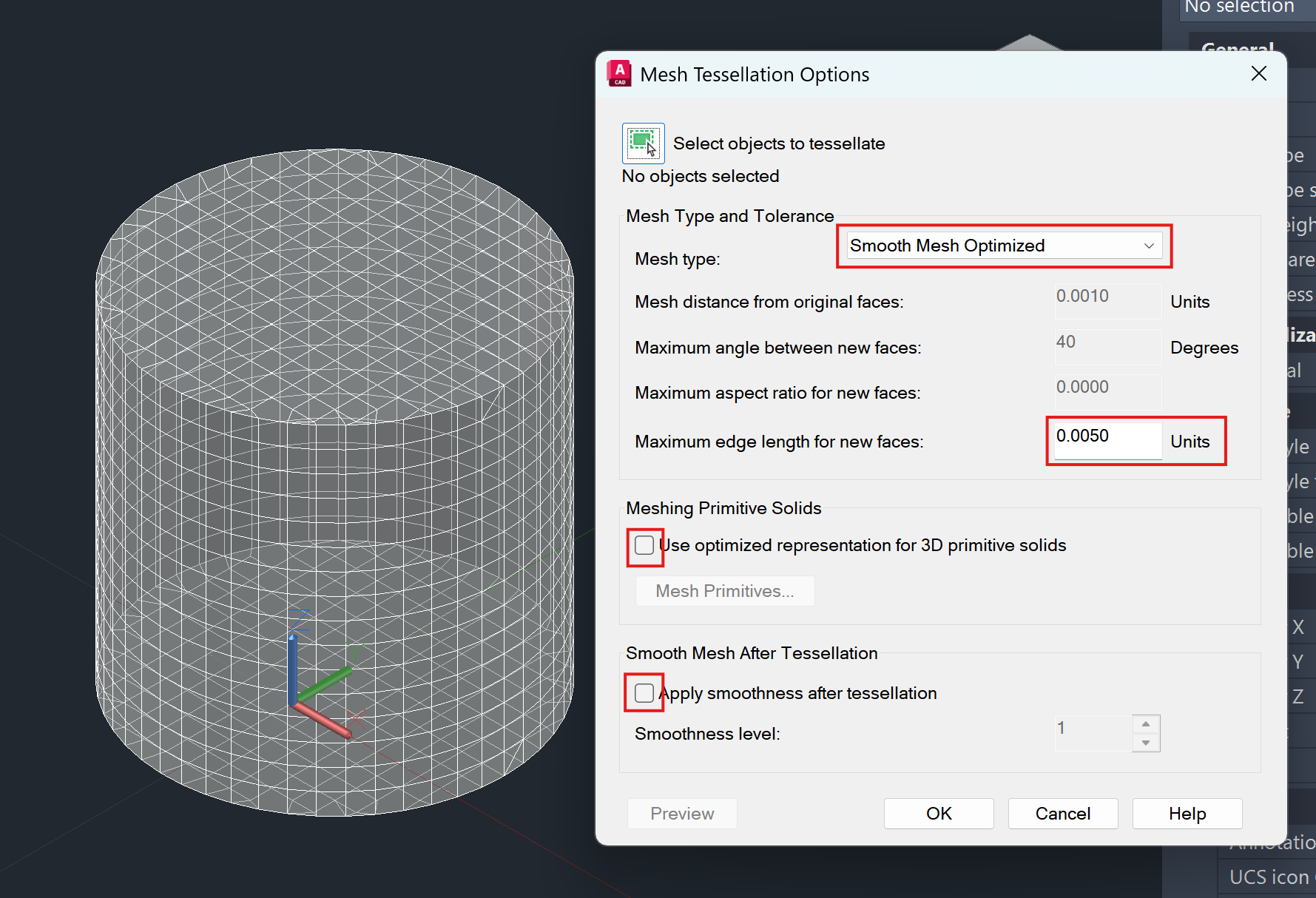
Saving the geometry as DXF
The final step consists of saving the geometry as a DXF file.
This guide has been tested with AutoCAD version 2026